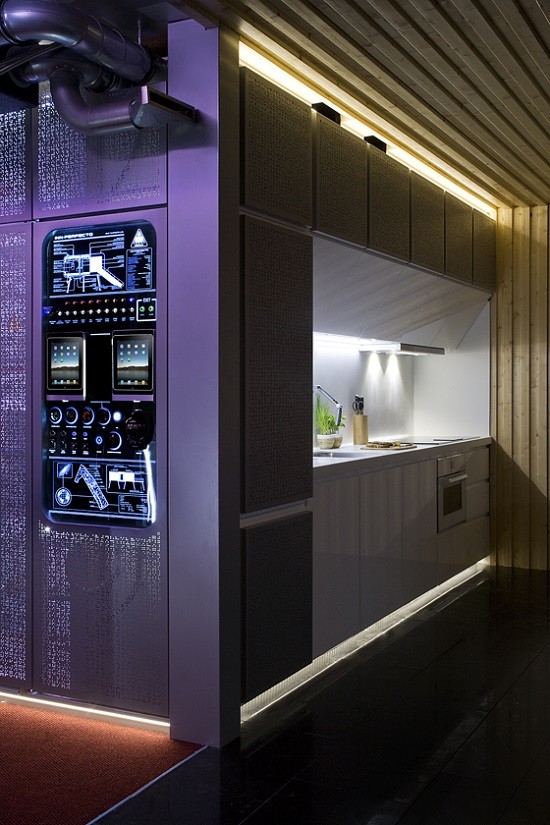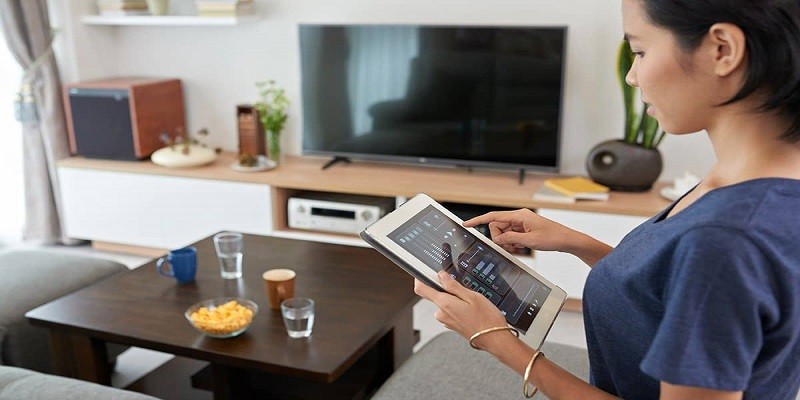Smart Homes: Integrating Technology into Everyday Life
Smart homes are revolutionizing everyday life by seamlessly integrating technology for a more convenient and efficient living experience. With the ability to control various household devices through voice commands or mobile apps, smart homes offer automated solutions to tasks like lighting, temperature control, security, and entertainment.
These advancements not only enhance comfort but also promote energy efficiency and increase security measures. As the Internet of Things continues to grow, so does the potential for smart homes to become an essential part of our daily routines. With the endless possibilities of customization and the ability to monitor and control our homes from anywhere, smart homes are transforming the way we live, making our lives more connected and convenient.
The Rise Of Smart Homes
Smart homes are revolutionizing how we live, integrating technology seamlessly into our daily routines. The convenience and efficiency that smart home technology offers continue to propel the rise of smart homes worldwide.
Key Components Of A Smart Home

Smart homes have revolutionized the way we live, integrating technology seamlessly into our everyday lives. These advanced homes are equipped with a range of innovative devices and systems that enhance our comfort, convenience, and security. Let’s explore some of the key components that make up a smart home:
Smart Lighting
Smart lighting is an essential feature of a modern smart home. With the ability to control lights remotely via smartphone apps or voice assistants, you’ll never have to fumble for a light switch again. Smart lighting systems offer a multitude of convenient features, allowing you to adjust brightness, create custom lighting schedules, and even change the color of your lights to match your mood or preferences.
Read More – The Blockchain Revolution: Beyond Cryptocurrency
Home Automation Systems
Home automation systems are the backbone of a smart home, enabling you to control and manage various devices and appliances effortlessly. These systems connect all your smart devices, such as thermostats, security cameras, door locks, and entertainment systems, to a central hub. With a user-friendly interface, you can control and automate these devices from anywhere, using either a smartphone app or voice commands. Whether it’s adjusting the temperature while you’re away or receiving notifications about a package delivery, home automation systems make everyday tasks more efficient and convenient.
Challenges And Concerns
While smart home technology promises convenience and efficiency, it is not entirely without its challenges and concerns. Two key areas that require careful consideration are privacy and security risks, as well as integration and compatibility issues.
Privacy And Security Risks
The increasing connectivity of smart home devices raises concerns about the privacy and security of personal data. With the constant transmission and storage of information, it becomes crucial to safeguard against potential breaches and invasions of privacy.
- Intrusion: Smart home devices can collect vast amounts of data, ranging from personal preferences to daily routines. Unauthorized access to this information can compromise an individual’s privacy.
- Data Security: As the number of interconnected devices in a smart home grows, so does the risk of cybersecurity threats. Malicious actors can exploit vulnerabilities in the system, compromising data security and even gaining control of the devices.
- Third-Party Access: Many smart home devices integrate with third-party services or apps, which may have their privacy policies. Users must exercise caution when granting permissions to external services and ensure they align with their privacy needs.
Read More – Virtual Reality: Bridging the Gap Between Digital And Physical Worlds
Integration And Compatibility Issues
An often overlooked challenge in adopting smart home technology involves integration and compatibility issues. These can arise due to the diverse range of devices available, each operating on different protocols and standards.
| Potential issues: | Solutions: |
|---|---|
| Lack of Interoperability: | Investing in devices that adhere to industry standards and support common protocols can minimize compatibility issues. |
| Technical Hurdles: | Ensuring that the smart home devices are compatible with existing Wi-Fi networks and have the necessary technical specifications helps prevent integration problems. |
| Vendor Lock-In: | Choosing devices from the same vendor or opting for open-platform solutions can prevent vendor-specific compatibility issues. |
Overcoming these challenges, both regarding privacy and security risks and integration and compatibility issues, is crucial to ensure a seamless and safe smart home experience.
The Future Of Smart Homes
Smart homes are shaping the future by seamlessly integrating technology into everyday life. From voice-controlled devices to automated systems, the convergence of convenience and innovation is revolutionizing how we live. As technology continues to advance, smart homes are set to become even more intuitive and interconnected, enhancing efficiency and comfort for residents.
Advancements in AI and Machine Learning
- AI and machine learning in smart homes facilitate automation for daily tasks.
Potential Impact on Daily Life
- Enhanced convenience, energy efficiency, and security are primary benefits.
- In smart homes, AI algorithms personalize experiences based on user behavior.
- Devices will predict preferences and adapt settings for optimal comfort.
- Enhanced safety features with AI monitoring for potential hazards or emergencies.
- Smart homes empower users by providing data insights for better decision-making.
- Voice assistants like Alexa or Google Home anticipate the need for a seamless experience.
- Automated routines for tasks such as cooking, cleaning, and even shopping.
- IoT devices communicate in real time for a synchronized living environment.
- Smart hubs streamline control, offering a centralized command center for all devices.
Read More – Renewable Energy Tech: How Solar Panels are Becoming More Efficient
Frequently Asked Questions
What Are The Benefits Of Having A Smart Home?
With smart home technology, you can increase energy efficiency, enhance security, and streamline daily tasks.
How Does Smart Home Technology Impact Daily Life?
Integrating smart home technology can simplify daily routines, offer convenience, and provide peace of mind.
What Are Some Popular Smart Home Devices?
Smart thermostats, voice assistants, security cameras, and smart lighting are popular choices for smart home technology.
Is It Difficult To Set Up Smart Home Devices?
Most smart home devices are designed for easy setup and can be installed without the need for technical expertise.
What Are The Security Considerations With Smart Home Technology?
It’s important to secure your Wi-Fi network, update device firmware, and use strong, unique passwords for each smart home device to ensure security and privacy.
Conclusion
As we wrap up, it’s evident that smart homes are revolutionizing daily living. Embracing technology enhances convenience and efficiency in our routines. Integrating these innovations can truly transform your household into a more connected and intelligent space. Embrace the future with smart home technology!

